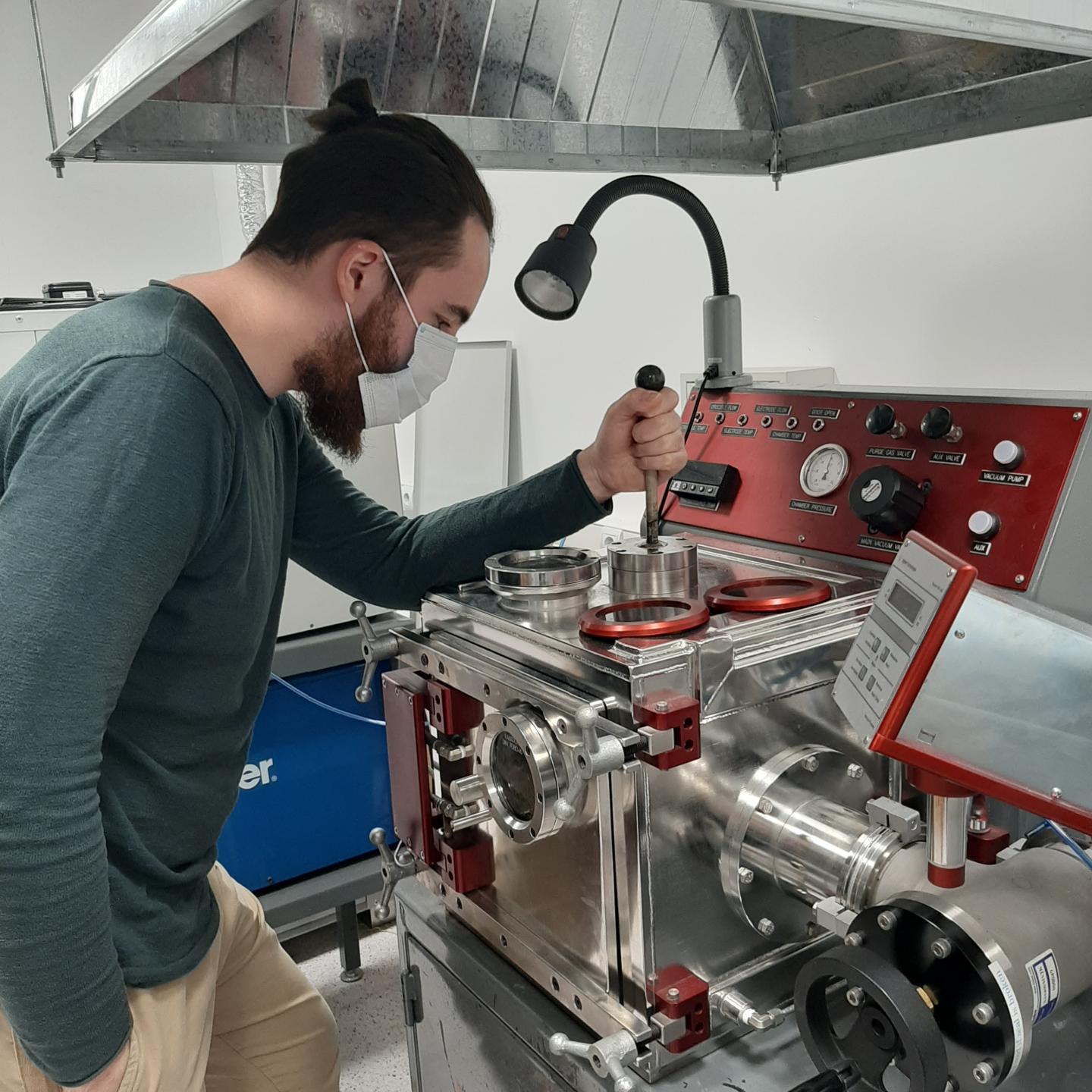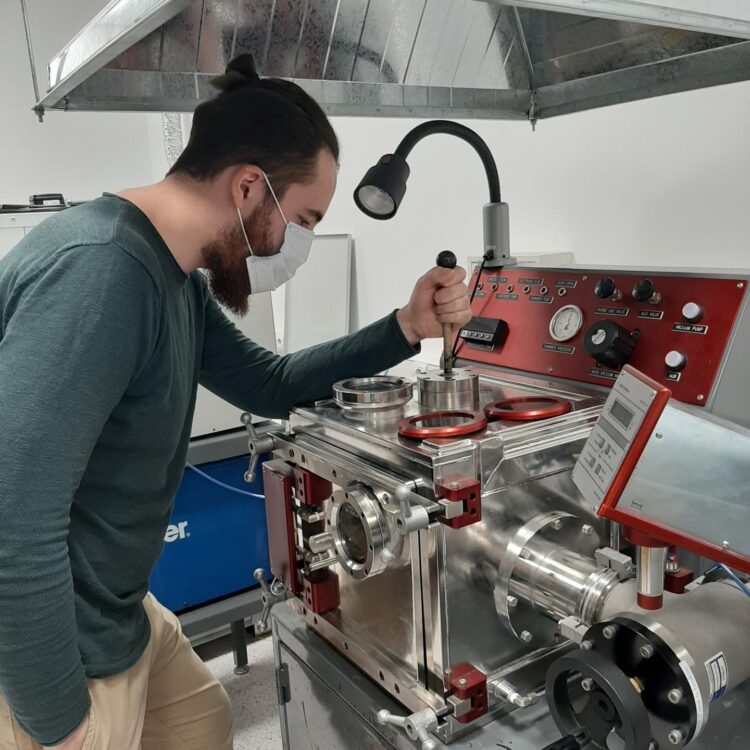
Credit: IKBFU
MAX-phases are the new promising class of artificially created compounds that started to be extensively studied in the last two decades. They are a family of ternary layered compounds with the general formula Mn+1AXn (n = 1, 2, 3 …), where M is an early transition metal (Sc, Ti, V, Cr, et cetera; elements from the left side of the d-block of the periodic table from group III to group VII); A — an element from group IIIA or IVA (the most common are Al, Ga, Si, Ge); X is carbon or nitrogen, that is, the MAX phase is carbide or nitride, respectively.
Due to their structure and composition, ternary layered carbides and nitrides of d- and p-elements have a unique combination of physical properties. These compounds have high electrical and heat conductivity like metals do. At the same time, they are resistant to damage and chemical influence, oxidation and thermal shock, which is usually characteristic of ceramics. Besides, these materials are easily machinable, have a high melting point, and are quite stable at temperatures up to 1000°C and above. Even though little is known about the magnetic properties of MAX-phases, these materials are considered suitable for creating spin-electronic and microelectronic devices, magnetic cooling systems and other revolutionary technologies.
The Cr2AlC compound, both in pure form and with manganese doping according to the formula (Cr1-xMnx)2AlC, is considered to be a potential candidate for discovering various unusual effects in the magnetic field. In order to understand the changes its properties caused by the addition of manganese, it was necessary to obtain a highly pure (without impurities) initial phase.
Scientists from the Immanuel Kant Baltic Federal University have optimized the method of MAX-phase synthesis via the arc melting. Using this technique, mixtures of pure elements are re-melted by the plasma arc discharge at the temperature of more than 3000°C in an inert atmosphere.
“Arc melting can be extremely effective in terms of increasing the content of manganese in the substituted MAX-phase (Cr1-xMnx)2AlC MAX-phase. When conventional synthesis methods, such as hot sintering and self-propagating high-temperature synthesis, are used manganese atoms poorly incorporate into the MAX-phase. The additional energy, provided to them by the high-energy plasma arc contributes to the qualitative enhancement of doping,” says Kirill Sobolev, an engineer of the laboratory of new magnetic materials of the IKBFU.
Physicists studied the influence of the initial ratio of the components on the formation of the structure and found which one gave the purest phase. For this, they varied the amount of aluminum with respect to chromium and carbon, optimizing the 2Cr: xAl: 1C ratio, where x was in the range from 1 to 1.5. The researchers came up with the fact that the excess of aluminum at the beginning of the process increased the purity of Cr2AlC, and that 2Cr: 1.3Al: 1C stoichiometry of the initial composition after annealing formed predominantly MAX-phase samples (almost single-phase material), as the increased concentration of aluminum in the initial mixture compensates its higher tendency to evaporate during melting. With a change in this ratio, other phases appeared in the samples — Cr7C3 and Cr5Al8, resulting due to the excess of various elements in the mixture.
Further, while maintaining the optimal ratio of Cr, Al, and C, the scientists changed the arc melting parameters to further improve the phase purity of the samples. They controlled the pressure in the furnace chamber and the time of the subsequent annealing and studied their effects on the quality of the samples. The increased pressure in the melting chamber worked like the increased concentration of aluminum and prevented the formation of by-products: the phases Cr7C3 and Cr5Al8. Pressure control was proven to be even more efficient: it tunes phase purity more accurately than the stoichiometric variation.
The scientists also tested the possibility to obtain Cr2AlC MAX-phase from the Cr3C2 precursor instead of the mixture of Cr and C in the original protocol. Considering the relatively high melting point of carbon (which is difficult to achieve in a melting chamber) the use of Cr3C2 with a much lower melting temperature should have improved the quality of the synthesized MAX-phase. This was done in order to achieve faster and more uniform distribution of carbon in the samples. However, it turned out that the use of Cr3C2 insignificantly affected the number of side phases.
“In the future, we will use these results for the synthesis of the doped (Cr1-xMnx)2AlC MAX-phase. Some preliminary experiments indicate that we are able to overcome already published values of the manganese incorporation inside this structure. If at the same time it is possible to obtain samples that do not have side phases in their volume and to analyze their magnetic properties, this will be extremely important, first of all, for the fundamental understanding of the magnetism of MAX-phases,” explained Kirill Sobolev.
###
The research was carried out jointly with scientists from the Institut PPRIME Laboratory of the National Center for Scientific Research (CNRS) of France, the University of Pavel Jozef Šafárik (Slovakia) and the University of Genoa (Italy).
Media Contact
Alexandra V. Titova
[email protected]
Related Journal Article
http://dx.





